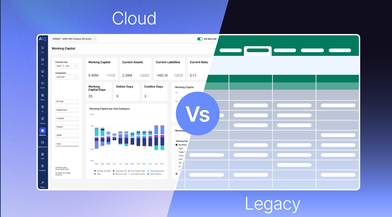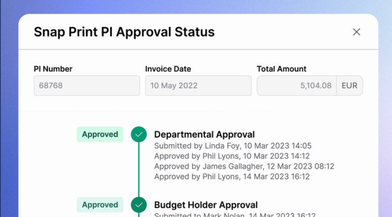
Month-end: these two simple words are enough to make even the most resilient finance professional sigh and reach for another cup of coffee.
Manual reconciliations, juggling spreadsheets, late nights and a social life on hiatus—it’s a high-stakes balancing act where even a miniscule error can bubble into a costly mess.
But what if closing the books didn’t have to be such a headache?
Read on to find out five key reasons why automation is the game-changer you and your finance team needs, complete with some practical examples of what that looks like in action.
1. Boost efficiency and save time
The month-end close is a labour-intensive process involving manual data entry, reconciliations, and chasing down missing figures. It’s slow, tedious, and riddled with opportunities for human error.
Automating the month-end close process speeds things up significantly. Tasks that once took days (or weeks) can now be done and dusted in hours, giving your finance team the freedom to focus on more valuable activities—like staying on top of current trends, advising leadership, or upskilling.
The result? A smoother, faster close with a team that’s happier and less prone to burnout.
Real-world scenario:
A mid-sized company where the finance team typically spends 10+ days on month-end.
After implementing financial accounting software, they cut that down to three. That’s an entire workweek reclaimed each month—what would you use that extra resource for?
2. Increased accuracy, minimised risk
Numbers don’t lie—but human error is a fact of life. From a rogue digit in data entry to that journal entry that slipped your mind, the tiniest of errors can throw off financial statements. And that could lead to compliance issues and decisions made with incorrect data.
Using accounting automation means these risks are dramatically reduced. Automated reconciliation tools, AI-backed error detection, and real-time data validation work together like a dream-team to make sure that the numbers add up.
That’s right. No more cross-checking endless spreadsheets or scrambling to find discrepancies (unless you really, really want to).
Real-world scenario:
A finance director at a fast-growing SaaS company notices frequent errors in their manual close process.
After switching to automated financial accounting software, discrepancies drop by 90%, which means more reliable reporting, fewer last-minute corrections, and better decision-making.
3. Smarter decisions, backed by data
In today’s fast-moving landscape, outdated financial data is about as useful as a teapot made of ice. Stakeholders need real-time insights, not reports that are already stale by the time they land in their inbox.
By automating month-end close, finance teams get instant access to up-to-date, accurate financial data. That means better cash flow management, better-informed budgeting, and the ability to respond quickly to opportunities or risks.
The bottom line is this: when your numbers are always on point, you can make smarter decisions and guide your business into the future with confidence.
Real-world scenario:
A retail chain uses automated financial reporting identified a dip in profitability early in Q4.
With real-time insights, they adjust pricing strategies and inventory management in time to recover before year-end—something they wouldn’t have caught with a slow, manual process.
4. Better collaboration and team efficiency
Tired of playing email tag when trying to track down missing numbers? Sick of struggling with version control on a shared spreadsheet? You’re not alone.
Manual month-end processes often create bottlenecks and barriers to communication, slowing everything and everyone down in their wake.
Automation prunes these inefficiencies out of your workflows by providing a centralised, cloud-based platform where teams can access, update, and reconcile data in real time.
When everyone is on the same page, the back-and-forth disappears and you can win back your most valuable resource: time.
Real-world scenario:
A global business with multiple finance teams across several time zones switches to an automated accounting system.
The result? Seamless collaboration, no duplicated efforts and a month-end process that flowed smoothly, regardless of location.
5. Faster financial reporting
In today’s financial landscape, speed is everything. If it takes too long to generate reports, decision-makers are flying blind.
Automated month-end close speeds up financial reporting, ensuring that key stakeholders always have timely insights into business performance.
Faster reporting means quicker responses to market changes, better financial planning, and a competitive edge. Instead of waiting for the numbers to come in, leaders can act on them immediately.
Real-world scenario:
A fast-scaling tech startup reduced its financial reporting turnaround from two weeks to two days by automating its close process. That agility allows them to adjust growth strategies in real time, rather than relying on already-outdated figures.
Ready to automate?
If your month-end close is still a stressful, manual process, it’s time to embrace the future. With accounting automation, you can close faster, reduce errors, and free up your finance team to focus on what truly matters—driving business growth.
Better begins now. Discover how AccountsIQ can level up your finance function with a free demo and take the first step towards a smarter, stress-free month-end close.


